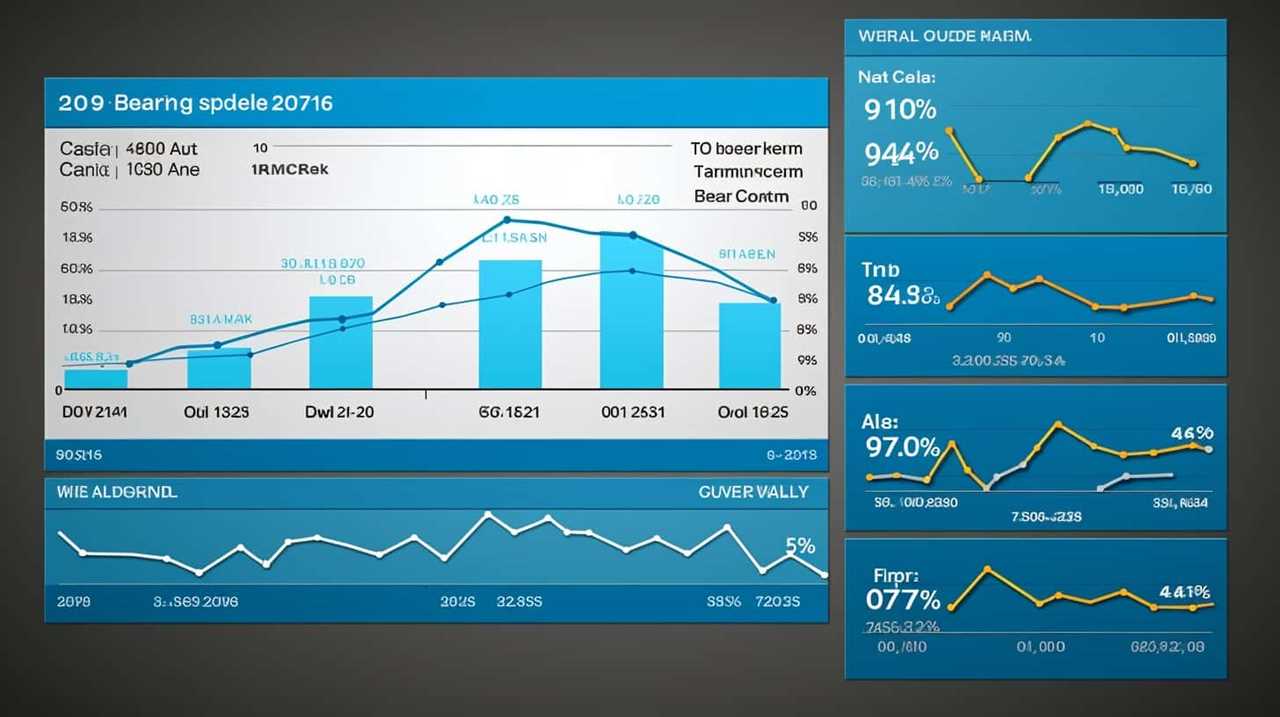Join us on an exploration into the future of search, diving into the intricate workings of Google’s intelligence.
In this article, we take you on a journey through the evolution of search algorithms, the integration of artificial intelligence, and the rise of voice and visual search.
With Google’s strategies for personalized search experience, we aim to provide you with an objective, analytical, and knowledgeable perspective on what lies ahead.
So, fasten your seatbelts and prepare to master the future of search!

Key Takeaways
- Google’s search algorithms have evolved significantly, incorporating machine learning and natural language processing technology.
- Artificial intelligence has been integrated into search, providing personalized recommendations and improving the accuracy of results.
- The rise of voice search has led to the need for search engines to adapt their algorithms to cater to specific and contextual situations.
- Visual search, powered by augmented reality and machine learning, has transformed the search landscape, enhancing the online shopping experience and accessibility for visually impaired individuals.
The Evolution of Google’s Search Algorithms
As we delve into the topic of ‘The Evolution of Google’s Search Algorithms’, we’re excited to explore the transformative changes that have shaped and continue to shape the way Google delivers search results.
Over the years, Google has made significant advancements in its search algorithms, leveraging machine learning algorithms and natural language processing techniques to enhance the accuracy and relevance of search results.
Machine learning algorithms are at the core of Google’s search evolution. These algorithms analyze vast amounts of data to understand user intent, decipher the meaning behind search queries, and deliver more personalized and contextually relevant results. By continuously learning from user interactions and feedback, these algorithms adapt and improve over time, ensuring that search results align with user preferences and needs.
In addition to machine learning, Google has also made significant strides in natural language processing advancements. This technology enables Google to better understand the complexities of human language, including nuances, context, and intent. As a result, Google can provide more accurate and helpful search results, even when faced with ambiguous queries or complex language structures.

The evolution of Google’s search algorithms has revolutionized the way we access information. By harnessing the power of machine learning and natural language processing, Google continues to refine its search capabilities, empowering users with more relevant and personalized search results.
As Google’s algorithms evolve, we can expect even greater advancements, ensuring that search results remain at the forefront of technology and user expectations.
Incorporating Artificial Intelligence in Search
Moving forward from the advancements in machine learning and natural language processing, our exploration now takes us to the incorporation of Artificial Intelligence (AI) in search. AI powered recommendations and algorithms have become integral in enhancing the accuracy of search results. Here are three ways AI is improving search accuracy:
- Personalized Recommendations: AI analyzes user behavior, preferences, and past search history to deliver personalized recommendations, ensuring that search results are tailored to individual needs.
- Contextual Understanding: AI algorithms are designed to understand the context behind search queries, allowing for more accurate interpretation and retrieval of relevant information.
- Natural Language Processing: AI enables search engines to understand and process human language, making it easier for users to express their queries naturally and receive more accurate results.
The Rise of Voice Search and Its Implications
We are now witnessing a significant shift in the way people search with the rise of voice search and its implications. Voice assistants, such as Siri, Alexa, and Google Assistant, have become increasingly popular and are changing user behavior when it comes to searching for information.

Instead of typing queries into a search engine, users can simply speak their questions or requests, allowing for a more natural and convenient search experience. This shift towards voice search has several implications for the future of search.
Firstly, it requires search engines to adapt their algorithms to better understand spoken language and provide accurate results. Additionally, voice search is often used in more specific and contextual situations, such as when driving or multitasking, which means that search engines need to account for these factors when delivering results.
Exploring the Potential of Visual Search
Continuing our exploration into the future of search, let’s delve into the potential of visual search and how it’s shaping user behavior and search engine technology.
Visual search, powered by augmented reality integration and machine learning advancements, is revolutionizing the way we search for information. Here are three key ways visual search is transforming the search landscape:

- Enhanced shopping experience: By enabling users to search for products using images, visual search allows for more accurate and efficient online shopping. Users can simply take a picture of an item and find similar products instantly, eliminating the need for cumbersome keyword searches.
- Improved information retrieval: With visual search, users can easily find information about objects, landmarks, or even plants and animals by capturing an image. This opens up a whole new world of possibilities for education, tourism, and personal knowledge.
- Enhanced accessibility: Visual search allows individuals with visual impairments to interact with the digital world more effectively. By providing audio descriptions or haptic feedback, visually impaired users can explore and understand the world around them with greater ease.
As visual search continues to evolve, it’s clear that it will play a significant role in shaping the future of search engine technology and user behavior.
Now, let’s transition into the next section, where we’ll explore Google’s strategies for creating a personalized search experience.
Google’s Strategies for Personalized Search Experience
To create a personalized search experience, Google employs advanced algorithms that analyze user data and preferences. Through user personalization, Google aims to deliver search results that are highly relevant and tailored to individual users. By understanding user behavior, interests, and search history, Google can provide search recommendations that align with the user’s specific needs and preferences.
Google’s strategies for personalized search experience involve collecting and analyzing vast amounts of user data. This includes factors such as location, search history, social media activity, and previous interactions with Google products. By leveraging machine learning and artificial intelligence technologies, Google can process this data to gain insights into user preferences and behaviors.

These insights are then used to customize search results and provide personalized recommendations. For example, if a user frequently searches for recipes, Google may prioritize recipe websites and cooking tips in their search results. Similarly, if a user often searches for news articles about a specific topic, they may receive news recommendations related to that topic.
Frequently Asked Questions
How Does Google’s Search Algorithm Prioritize Search Results?
Google’s search algorithm prioritizes search results based on a variety of factors. These include Google’s ranking criteria, which evaluates the relevance and quality of web pages. User behavior, such as click-through rates and time spent on a page, also influences search results.
What Are the Ethical Implications of Using Artificial Intelligence in Search?
Ethical implications of using artificial intelligence in search are profound. Privacy concerns arise due to the vast amount of personal data collected. Like a double-edged sword, AI offers convenience but also raises questions about individual autonomy and data exploitation.
How Does Voice Search Impact Traditional Text-Based Search?
Voice search has both pros and cons compared to traditional text-based search. It impacts user behavior by providing convenience and faster results. However, it may struggle with accuracy and understanding complex queries.

How Does Visual Search Technology Work and What Are Its Potential Applications?
Visual search technology works by analyzing images and identifying objects, text, or patterns within them. Its potential applications are vast, from e-commerce to medicine, allowing us to search and discover information in a more intuitive and efficient way. The benefits of visual search technology are undeniable, enhancing our ability to explore and interact with the digital world.
How Does Google Personalize Search Results for Individual Users?
Google personalizes search results for individual users by analyzing their user data and search history. This allows us to tailor the search experience to each user’s preferences and provide more relevant and personalized search results.
Conclusion
As we delve into the future of search, it becomes clear that Google is continuously evolving its algorithms to provide a more personalized and intuitive search experience.
With the incorporation of artificial intelligence, voice search, and visual search, the search engine giant is revolutionizing the way we find information.

Just like a compass guiding us through a vast ocean of data, Google’s strategies aim to navigate us towards the most relevant and tailored results, ensuring an enjoyable and efficient search journey.










